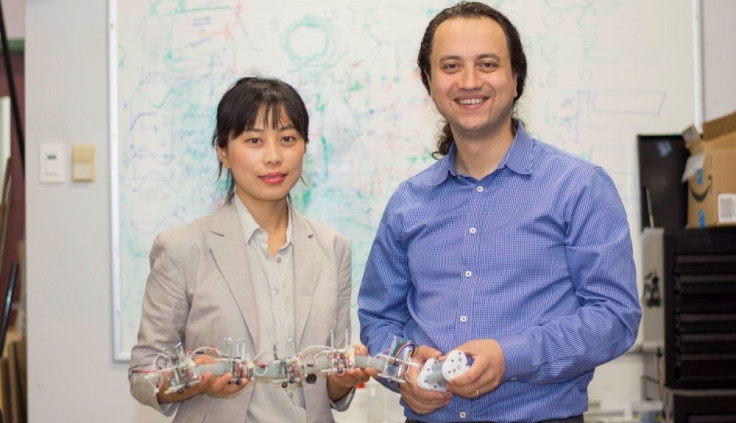Scientists are developing autonomous snake-like robots to aid natural disaster rescue efforts
They will be able to move easily through rubble, confined spaces and rough terrain, sending crucial information back to emergency responders.

American researchers, funded by the National Science Foundation, are developing an autonomous snake-like robot designed to aid search and rescue efforts in the aftermath of natural disasters.
The machine's design will enable it to move easily through rubble, confined spaces and rough terrain, sending crucial information and images back to emergency responders.
"The goal of this project is to have a snake-like robot with the autonomy to navigate through its environment without close supervision," said Jie Fu, assistant professor of electrical and computer engineering at Worcester Polytechnic Institute (WPI) and co-principal investigator on the project.
"In search-and-rescue scenarios, you'd want a robot you can rely on to go into areas inaccessible by humans and provide critical information about conditions there and about who needs to be rescued first."
The 'soft' robot will be constructed from silicone rubber and made up of various connected modules which each control their own motion, resulting in movement resembling that of a snake.
Cagdas Onal, assistant professor of mechanical engineering and co-principal investigator on the project says the robot is being designed to use objects around it.
"A snake, for instance, could move by wrapping part of its body around a rock so it can push against it and propel itself better," said Onal. "If it's in a pipe or a maze-like structure, it might push off the walls to be able to move around an obstacle. It's very bioinspired. We couldn't reproduce that kind of movement safely before because we didn't have the materials and the actuators. Now we do."
So-called 'soft' robots such as the one the team are working on offer significant advantages over traditional hard robots. Because their bodies don't have discrete joints, they can bend and transform their shape to negotiate tight corners, for example.
In addition, the team are working on complex algorithms which will enable the robot to make decisions autonomously, allowing it to pick the best type of motion based on the environment it finds itself in.
"The robot only needs to know where it's trying to go and it will figure out how to get itself there," said Onal.
Fu added: "If I put the robot in the sand and then on gravel, it would exhibit different behaviours."
According to the team, the robot should also be able to learn which body movements – for example, wrapping around objects or pressing against obstacles - work best in particular situations.





















